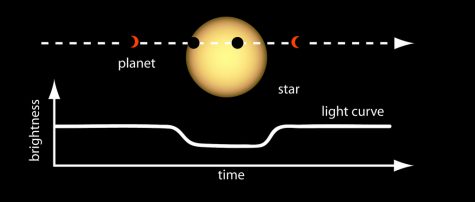The Kepler Telescope: The End of an Era
Kepler Telescope
November 4, 2018
After its nine-year mission and its detection of over 2,600 exoplanets, the Kepler Telescope has finally run out of fuel and has shut down for retirement. However, this telescope will go down as a legend, as it has revolutionized exoplanetary research and is the source of many new discoveries. With the end of its mission, the golden age of the Kepler Telescope has finally come to an end, yet new doors have been opened for countless more discoveries.
Exoplanets have been a burning topic of research for the past few decades, and since the launch of the Kepler Telescope, over 2,600 previously undiscovered planets have been detected in the span of less than a decade. Exoplanets are planets that are found outside of the solar system, and a substantial amount of information about them has been discovered in the past years. Although the Kepler Telescope’s main mission was to find habitable planets (planets which have water), it has also discovered a wide range of planets. In fact, astronomers were able to create a periodic table based on the exoplanets found by the telescope and were able to learn a great deal about these enigmatic worlds beyond our physical reach.
The Kepler Telescope has discovered nearly half of all exoplanets known to date. Before the Kepler Telescope, astronomers used a method called “relativistic beaming” to test the amount of intensity a star released, but this method was shown to be an ineffective way to detect these “tiny” planets. With the Kepler Telescope, a much simpler and straightforward method was introduced, which measures the light transits of stars in large areas of space. A light transit is essentially a graph that shows fluctuations within the light that an object emits. If a planet orbits a star, the light is occasionally hindered by the planet when it passes in front of the star, and will drop in intensity because the star becomes dimmer. The graph below demonstrates this phenomenon:

The light transit method has proved to be a much more effective way to detect exoplanets since it doesn’t require any physical properties of the planet itself to be present—only the light of the star—which is much easier to obtain.
So, what is the future of exoplanetary research? With the retirement of the Kepler Telescope, the Transiting Exoplanet Survey Satellite (TESS) will take over. By observing over 400 times the area that the Kepler Telescope observed, TESS is expected to detect over 20,000 exoplanets. That’s almost ten times as many as the Kepler detected.
Another telescope that will retire in the near future is the Hubble Telescope. This telescope is expected to shut down sometime in 2020, and its replacement, the James Webb Telescope, is expected to launch in the same year. This telescope is expected to find new exoplanets and information about them through detection of their atmospheres. Other goals of the James Webb Telescope include star/supernova formation and galaxy formation.
With the departure of the Kepler Telescope, many new doors within the arena of astronomy have opened. The future of astronomy is bright, thanks to the outstanding performance that the Kepler Telescope demonstrated in these past nine years. With the run of the Kepler, not only have we learned more about exoplanets, but we have also obtained a deeper understanding of our own planet. With the thousands of exoplanets discovered, it is hard not to question our place within the universe. Perhaps within the next few decades, we may even detect other life forms within the universe. For now, however, we can simply appreciate the many wonders that the Kepler Telescope has offered us in its astronomical observational perspectives of universal life.

















































































































































